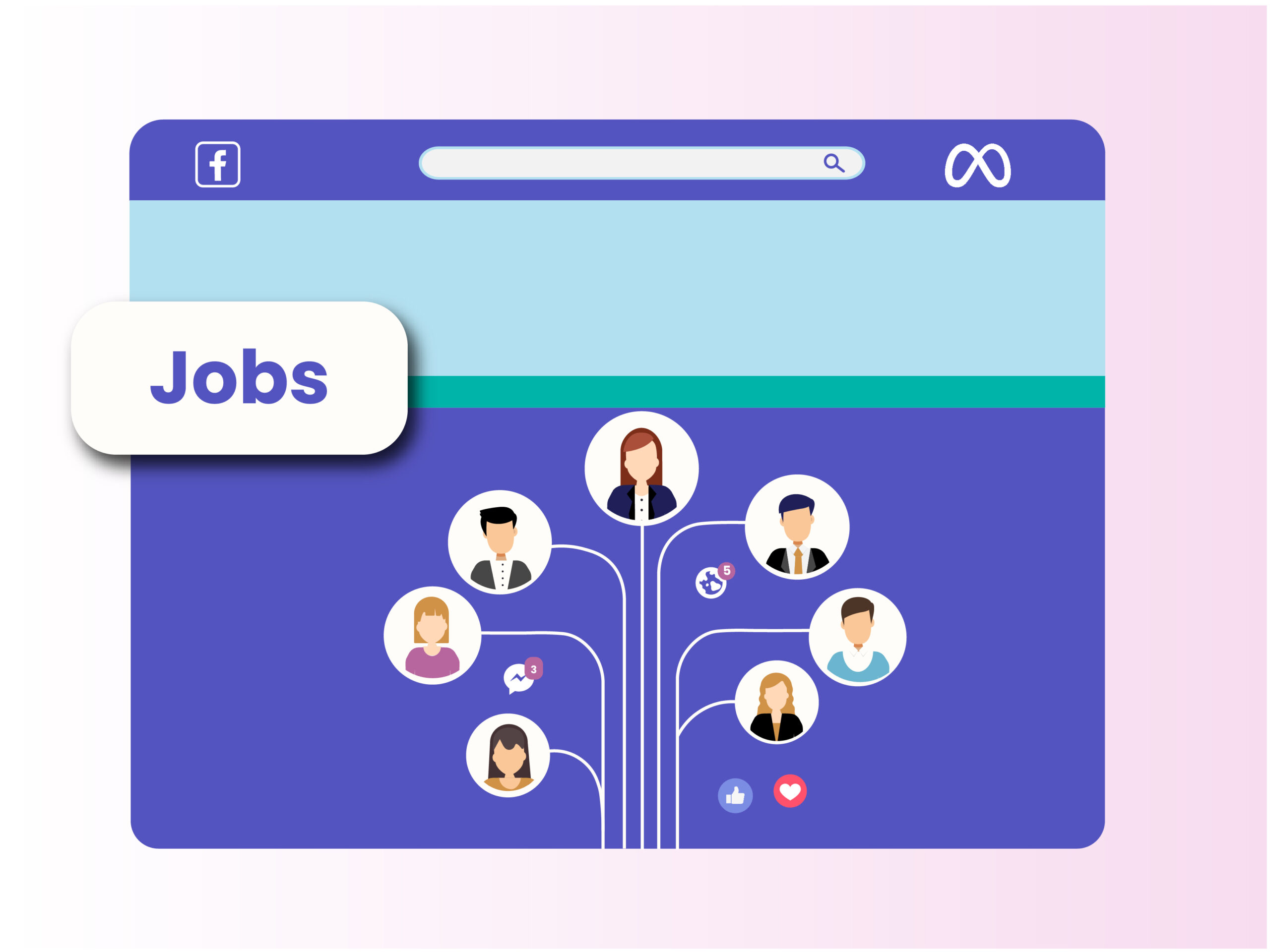Introduction
How do companies pull off high-volume recruiting? In many industries, this is a critical challenge when organizations find themselves needing to fill a large number of positions and fast! Unlike traditional hiring, this scenario cranks up the pressure, demanding a totally different game plan.
The sheer volume of candidates and the sprint against time can leave recruiters spinning. Feeling the heat yet?
Don’t worry, the key to success is a set of innovative strategies tailored for this high-stakes environment. Let’s dive into solutions that streamline this intense process and turn chaos into a well-oiled recruitment machine.
What is High-Volume Recruiting?
High-volume recruiting is a versatile approach used not only by companies during periods of rapid growth, seasonal peaks, or big projects, but also by staffing agencies and recruitment process outsourcing (RPO) firms. For these agencies, managing large-scale recruitment is a regular part of their services, showcasing the wide application of this strategy. High-volume recruiting is not your average recruitment strategy; it demands detailed planning, fast processing of a high volume of applications, and an efficient, streamlined selection process.

What is the High-Volume Recruiting Process?
The high-volume recruiting process is an operation designed to fill large numbers of positions quickly and efficiently. Unlike traditional recruiting, which often focuses on extensive vetting and personalized candidate engagement, high-volume recruiting focuses on streamlining processes while maintaining quality. Here’s how it works step by step.
1. Streamlining the application process
Ideally, the journey begins with a frictionless application experience. High-volume recruiting prioritizes ease and accessibility to attract the maximum number of applicants. Unlike individual roles that require detailed resumes and impressive cover letters, high-volume hiring simplifies the initial step to gather only essential information.
- Why simplify? Many candidates in this segment, especially for hourly or entry-level positions, may not have polished resumes or might be applying to multiple roles simultaneously.
- Tools that help:
- Text-to-apply: With a staggering 98% open rate for texts (compared to 22% for email), this method makes it easy for candidates to express interest on the go.
- Mobile-optimized applications: Ensure applications are mobile-friendly to reduce drop-offs.
Key tip: Reduce friction at this stage – fewer fields mean more completed applications and a larger talent pool.
2. Screening candidates at scale
Once applications are submitted, the next step is to identify the most viable candidates quickly. Automated tools, like AI-powered applicant tracking systems (ATS), can help screen candidates based on predefined criteria such as skills, certifications, and availability.
- Automation in action:
- Resume parsing tools can filter candidates with relevant qualifications.
- Chatbots can conduct initial pre-screening by asking candidates simple questions about their eligibility.
- High-volume screening focus: For hourly or non-specialized roles, the process typically emphasizes eligibility (e.g., age, availability, and location) over lengthy evaluations.
3. Accelerating the interview process
Time is crucial in high-volume recruiting. Interviews, if required, must be swift and effective! For hourly roles, the focus often shifts from in-depth discussions to quick verification of basic qualifications. For corporate roles, however, a streamlined yet rigorous process ensures quality hires.
- For hourly positions:
- Conduct short, checklist-based interviews to verify essential qualifications like certifications or transportation availability.
- Group interviews or on-the-spot hiring events can be effective in these cases.
- For corporate positions:
- Use structured interview templates and video interviewing tools to reduce scheduling delays.
- Use AI-driven tools to analyze candidate responses for alignment with role requirements.
4. Making the final selection: Balancing speed and quality
At this stage, high-volume hiring emphasizes quick decisionmaking to avoid losing top talent. Candidates often juggle multiple job offers, so shortening the time between interviews and job offers is critical.
- Key considerations:
- Assessing vs. selling: While evaluating candidates, recruiters often need to “sell” the opportunity by highlighting perks like flexible hours or growth potential.
- Seamless decisionmaking: Use technology to centralize feedback from all stakeholders and automate offer letters.
- For hourly roles:
- Focus on immediate placement and straightforward communication about job details.
- Avoid lengthy negotiations by setting clear compensation expectations upfront.
5. Onboarding at scale
Efficient onboarding is crucial to ensure new hires are prepared to hit the ground running. High-volume recruiting often includes group onboarding sessions and digital onboarding platforms that deliver training and compliance materials in bulk.
- Tools for success:
- E-learning platforms provide instant access to training modules
- Automated task tracking for document collection and compliance checks
High-volume recruiting is all about balancing speed with precision. By using technology wherever possible, simplifying processes, and focusing on candidate experience, you can scale your hiring efforts without sacrificing quality. Shazam!
High-Volume Recruiting vs Specialized/Niche Recruitment
High-volume recruiting, especially for blue-collar jobs, is a unique and challenging process different from specialized or niche recruitment.
High-volume recruiting for blue-collar jobs
High-volume recruiting involves filling a large number of positions, often for roles with a lower barrier to entry, such as those in manufacturing, logistics, and retail. This type of recruitment is characterized by its scale and speed, aiming to process thousands, sometimes hundreds of thousands, of applications annually. For example, hiring for 6,000 contact center agents a month could mean sifting through 600,000 applicants to find the right candidates!
Key challenges:
- Sourcing: The biggest hurdle in high-volume recruiting is finding enough qualified candidates. Traditional job boards may not be effective, requiring recruiters to leverage referrals, maintain a pool of vetted candidates, and use programmatic job advertising to reach potential applicants efficiently.
- Application process: The application must be simple and engaging to prevent drop-offs.
- Assessment: Given the sheer volume of candidates, manual screening is impractical. Automated assessments for skills, character traits, and abilities are essential to efficiently process applicants and identify those who are most likely to succeed in the role.
- Interviewing: Scheduling interviews for thousands of candidates is a logistical nightmare. Automation and technology, such as AI-driven scheduling tools or video interviews, are vital for managing this stage effectively.
- Selection: The final selection must be data-driven and unbiased, utilizing tools designed for high-volume hiring to evaluate candidates against standardized criteria rather than subjective judgments.
Specialized/niche recruitment
Specialized or niche recruitment focuses on filling positions that require specific skills or qualifications, often in fields like technology, healthcare, or engineering. This process is usually more targeted, with a smaller pool of highly-qualified candidates.
Key challenges:
- Sourcing: Recruiters must identify and attract candidates with specific skill sets, often using targeted job boards, professional networks, and industry events.
- Application process: The application and interview process is more detailed, with a focus on assessing the candidate’s expertise and fit for the specialized role.
- Assessment: Candidates may undergo rigorous technical assessments, portfolio reviews, or case studies to demonstrate their capabilities.
- Interviewing: Interviews are in-depth, often involving multiple rounds with different team members to assess both technical skills and cultural fit.
- Selection: The selection process is highly personalized, with a focus on finding the right match for the niche role, which can take longer but is crucial for long-term success.
| Aspect | High-Volume Recruiting for Blue-Collar Jobs | Specialized/Niche Recruitment |
| Focus | Filling a large number of positions quickly, often for roles with a lower barrier to entry. | Filling positions that require specific skills or qualifications, often in specialized fields. |
| Sourcing | Utilizes broad strategies like referrals, programmatic job advertising, and maintaining a pool of vetted candidates. Traditional job boards may not yield the desired quantity and quality of applicants. | Targets specific skill sets using niche job boards, professional networks, and industry events to attract highly qualified candidates. |
| Application | The process is streamlined and simplified to minimize drop-offs, with a focus on engaging candidates quickly and efficiently. | The application process is detailed and tailored to assess the candidate’s expertise and qualifications for the specialized role. |
| Assessment | Automated assessments for skills, character traits, and abilities are crucial due to the volume of applicants. Manual screening is impractical. | Candidates undergo rigorous assessments, such as technical tests, portfolio reviews, or case studies, to demonstrate their capabilities. |
| Interviewing | Utilizes automation and technology, such as AI-driven scheduling tools or video interviews, to manage the logistical challenge of interviewing thousands of candidates. | In-depth interviews, often involving multiple rounds with different team members, focus on assessing both technical skills and cultural fit. |
| Selection | The selection process is data-driven and unbiased, using tools designed for high-volume hiring to evaluate candidates against standardized criteria. | The selection process is highly personalized, focusing on finding the right match for the niche role. This can take longer but is crucial for long-term success. |
| Key Challenges | Managing the scale of applications and efficiently processing a high volume of candidates to identify those most likely to succeed in the role. | Identifying and attracting candidates with specific skill sets and ensuring a detailed assessment to find the best match for specialized roles. |
Challenges of High-Volume Recruitment
High-volume recruitment presents several unique challenges that require strategic planning and execution.
Talent attraction
Attracting the right talent in high volumes is a significant challenge. Companies must make sure that their brand stands out to potential candidates in a crowded job market. This means not only showcasing the company culture and benefits, but also effectively communicating the opportunities for growth and stability within blue-collar roles.
Automated job distribution
To reach a wide audience, job postings must be distributed across multiple channels and platforms. Automated job distribution becomes essential to manage this process efficiently. It ensures that job advertisements reach the right candidates at the right time, across job boards, social media platforms, and other digital channels. However, setting up and managing these systems can be complex and requires a good understanding of both the technology and the job market.
Efficient candidate processing
High-volume recruitment involves rapidly handling a large number of applications, requiring recruiters to review, screen, and shortlist candidates quickly.
Consistency in candidate assessment
Ensuring each applicant is evaluated uniformly is vital for identifying the best candidates in a high-volume setting.
Candidate experience management
Providing a positive experience for a large number of candidates is key to maintaining the company’s reputation and keeping applicants engaged.
Diversity
Ensuring diversity in the recruitment process is a challenge – especially when dealing with high volumes of applicants! Companies need to implement strategies that attract a diverse candidate pool and eliminate bias from the screening and selection processes. This may involve using technology to anonymize applications, diversifying sourcing channels, and training recruiters on diversity and inclusion best practices.
Maintaining the quality of hire
In the rush to fill many positions, there’s a risk of compromising on the quality of hires. Maintaining high recruitment standards while operating at scale requires robust screening and assessment processes. Companies must balance the need for speed with the need to thoroughly evaluate candidates’ skills, experiences, and fit for the role. This often involves utilizing technology to automate parts of the screening process without losing the personal touch that can identify great candidates.
Balancing speed and accuracy
The challenge lies in quickly filling positions while also ensuring each candidate is an appropriate fit for the role, balancing rapid hiring with precise selection.
Proven Strategies for Successful High-Volume Recruiting
To tackle the demands of high-volume recruitment, certain strategies stand – let’s take a look.
Leverage technology and automation
Implementing AI-driven applicant tracking systems (ATSs) can streamline the recruitment process. For example, incorporating AI for resume screening has been shown to reduce time-to-hire by approximately 75%, according to a study by Ideal. Automated communication tools can also improve engagement, with companies reporting a 50% increase in candidate satisfaction.
Implement programmatic job advertising
Programmatic job advertising represents a transformative approach in the recruitment industry, addressing the inefficiencies of traditional job advertising methods. Traditional strategies often lead to significant investment with poor return. This is because conventional platforms typically optimize for basic engagement metrics like clicks or cost-per-click, which, while easily quantifiable, do not necessarily translate into successful hires or cost-effective recruitment.
Programmatic is an important shift towards more strategic, data-driven advertising efforts. By utilizing advanced data analytics and artificial intelligence, users can analyze lots of advertising sources to find out which ones truly contribute to successful hires. This allows companies to optimize their advertising spend by focusing on channels that deliver not just clicks, but actual employees.
Source great-fit applicants that convert to successful hires quickly, with shrinking and uncertain budgets, and without compromising the candidate experience.
Experience the Power of Programmatic Job Advertising!
Monitor and optimize recruiting metrics
Effectively tracking metrics, like time to fill and cost per hire, is essential. A LinkedIn report suggests that companies focusing on these metrics can improve the quality of their hires by up to 40%. Regular analysis helps in refining recruitment strategies and identifying effective sourcing channels. Data for the win!
Diversify sourcing channels
Leveraging various channels, including job boards, social media, and employee referrals, can widen the talent pool. Employee referral programs are particularly effective, contributing to about 30% of hires in many organizations.
Implement a streamlined screening process
Standardized assessments and structured interviews can reduce screening time significantly. A report from the Society for Human Resource Management (SHRM) indicates that structured processes can cut down screening time by up to 50% while maintaining high-quality candidate selection.
Automate documentation and onboarding
Digital onboarding processes can enhance the new hire experience and improve retention. Research from the Brandon Hall Group shows that companies with a strong onboarding process improve new hire retention by 82% and productivity by over 70%. Automation in onboarding also reduces the administrative burden, leading to more efficient use of HR resources.
Candidate database and/or talent community
- Recruitment CRM or candidate database: Using a list of people who have applied before is a smart move. It helps you quickly find and connect with potential candidates you already know. This can make hiring faster and help you find better people for the job.
- Talent community: Creating and engaging with a talent community interested in working for you is very helpful. Keep in touch with them and share updates to keep them interested. This way, you have a ready group of people who might want to apply for jobs in the future.
Tips for Effective High-Volume Recruitment
For high-volume recruitment to really work its magic, there are a few tips that can make all the difference.
Build a strong employer brand
Think of your employer brand as a beacon for top talent. Show off what makes your company special – its culture, values, and what it’s like to work there. This not only draws in applicants, but also helps keep them around.
Focus on positive candidate experience
It’s all about making every candidate feel valued, whether they get the job or not. Clear communication, respectful interaction, and timely feedback can turn candidates into cheerleaders for your company.
Make your candidate database work for you and create experiences that convert. Meet MOJO Talent Engage CRM.Struggling to Build Meaningful Relationships with Candidates, Across Channels?
Balance speed with quality of hire
Sure, you need to move fast in high-volume recruiting, but you can’t let quality take a backseat. Using the right screening tools and sticking to solid standards ensures you’re picking the best without rushing through.
Remember, high-volume recruiting isn’t just about filling positions quickly; it’s a careful blend of strategy, technology, and a focus on the human side of things. By streamlining your processes and treating each candidate well, you’ll not only meet your hiring needs but also build a positive, lasting impression.
Make your recruitment CRM find candidates for you
Set up your recruitment CRM system to automatically identify potential candidates from your existing database. This means your CRM will alert you to candidates who match new job openings, saving you time in searching for suitable applicants.
Use AI in recruitment
Incorporating artificial intelligence (AI) into your recruitment process can significantly improve efficiency. AI can help with screening resumes, scheduling interviews, and even initial candidate communications. It’s like adding a turbo boost to your recruitment efforts, allowing you to process more applications faster and more accurately, ensuring you don’t miss out on top talent.
What Tools Are Required for High-Volume Recruiting?
When it comes to high-volume recruiting, the right tools are not just helpful; they are a game-changer. In fact, these tools can be the difference between chaos and order. Here are some of the critical tools that make high-volume recruiting not only manageable but also efficient.
Job creation/posting tools
These tools simplify the process of creating and posting job listings. They save time and ensure consistency across various platforms.
Job title optimization
Using tools that help optimize job titles can significantly impact the visibility of your postings. The right title can attract more suitable candidates by making the position easier to find.
Job description creator
A tool that assists in creating clear, concise, and attractive job descriptions can help draw in the right candidates. It ensures that the essential requirements and benefits are communicated effectively.
Multi-posting tool
This tool allows you to post a job to multiple job boards and social media platforms with a single submission. It’s a massive time-saver and increases the job’s visibility.
Programmatic job advertising
These platforms use algorithms to place your job ads where they’ll be seen by your target candidates, optimizing your advertising budget and improving the quality of your applicant pool.
Full-funnel tracking and attribution
Understanding where your best candidates come from and which channels perform best is crucial. Tools that track the effectiveness of your recruitment funnel from start to finish can help refine your strategy over time.
ATS
An ATS is vital for managing the influx of applications, organizing candidate information, and streamlining the selection process. It’s the backbone of any high-volume recruitment operation.
Candidate to job Mapping tool
This technology automatically matches candidates to job openings based on their skills, experience, and preferences. It helps quickly identify the most suitable applicants for each position, reducing the time spent on manual screening.
What Metrics Apply to High-Volume Recruiting?
In high-volume recruiting, tracking the right metrics is crucial for assessing the effectiveness of your recruitment strategies. These metrics provide valuable insights that can help streamline the process and improve outcomes. Let’s explore some of the key metrics that are most important in high-volume recruiting scenarios.
Interview-to-hire ratio
This refers to the number of interviews conducted for each successful hire. A lower ratio indicates a more efficient recruitment process, where fewer interviews are needed to identify a suitable candidate. Tracking this ratio helps understand how effective the screening and selection process is.
Quality of hire
Assessing the quality of hire is crucial for determining the long-term success of your recruitment strategy. This metric can be evaluated through various indicators such as performance ratings, retention rates, and the contribution of new hires to company goals. High-quality hiring indicates that the recruitment process does a good job in attracting and selecting candidates who perform well and fit in with the company culture.
Time taken to fill a position
Also known as “time to fill,” this metric tracks the average time it takes from when a job is posted to when a candidate accepts the job offer. In high-volume recruiting, where speed is often a priority, a shorter time to fill is generally preferred. However, it’s important to balance speed with quality!
Mastering High-Volume Recruiting Strategies: Real-Life Example
Amazon’s strategy that worked
Amazon’s approach to high-volume hiring provides a fascinating case study in balancing rapid growth with efficient recruitment. Their strategies offer insights into how a major corporation can effectively scale its workforce, doubling it in just five years while still ensuring each hire is a valuable addition.
- Innovative recruitment strategies: At the core of Amazon’s success is its innovative approach to recruitment. They seamlessly blend advanced technological tools with robust processes. This fusion enables them to swiftly process a high volume of applications, yet each step is designed to ensure that no aspect of candidate quality is overlooked.
- Technological integration: Central to Amazon’s method is the integration of technology in their recruitment process. They utilize AI-based screening techniques that enable them to quickly identify candidates with the right qualifications and potential for cultural fit. This tech-driven approach accelerates the initial stages of hiring without sacrificing thoroughness.
- Quality-centric hiring: Despite the scale of their operations, Amazon doesn’t compromise on the quality of their hires. They achieve this by implementing tools that support informed decision-making, ensuring that new recruits are not just skilled but also align with the organizational ethos and work culture.
- Efficient recruitment process: Amazon’s high-volume hiring is characterized by its streamlined nature. Their system efficiently manages large numbers of applications, coordinating interviews and candidate communications effectively. This is crucial in minimizing the time and resources spent on each recruitment cycle, allowing them to manage the high volume of hires without a dip in recruitment standards.
Starbucks recruitment
Another compelling case study in high-volume recruiting is that of Starbucks. This global coffeehouse chain faced the challenge of hiring thousands of baristas and store managers annually across various locations.
To tackle this, Starbucks developed a comprehensive recruitment strategy focusing on both the efficiency and quality of hires. They leveraged a mix of traditional and digital recruitment methods, including online job portals, social media campaigns, and college recruiting events. A key aspect of their strategy was to emphasize the Starbucks culture and values in their recruitment efforts, attracting candidates who align with their brand ethos.
Starbucks also used an ATS to streamline the recruitment process. This system helped in efficiently sorting through a high volume of applications, automating tasks like resume screening, and tracking the progress of candidates through the hiring process. Moreover, Starbucks focused on creating a positive candidate experience, ensuring quick and transparent communication throughout the recruitment process.
By utilizing a blend of technology, strategic branding, and efficient process management, Starbucks successfully managed high-volume hiring while maintaining the quality of its workforce.
Benchmarks for Industries That Use High Volume Recruiting
Explore the specialized recruitment data on Joveo’s Interactive Insights. Here you can come across expertly crafted metrics and information that can address the needs of hiring professionals across various industries.
Bookkeeping, Accounting, and Auditing Clerks
Conclusion
High-volume recruiting is a dynamic and complex challenge that requires a robust blend of strategy, technology, and human insight. By understanding the unique demands of this process, companies can adopt innovative solutions that streamline operations and enhance the efficiency and quality of their hires. The key is to utilize cutting-edge tools, optimize recruitment practices, and maintain a focus on the candidate experience to not only fill positions quickly but to do so with the right people.
Using the right strategies ensures that your organization can meet its recruitment goals while upholding the standards necessary for sustained success. As we move forward, the evolution of recruitment technologies and strategies will continue to transform how businesses approach high-volume hiring. By staying informed and adaptable, companies can remain competitive in securing top talent, even in the most demanding hiring scenarios.
FAQs
What is volume hiring in recruitment?
Volume hiring in recruitment, often synonymous with high-volume recruiting, refers to the process of hiring a large number of employees within a short timeframe, often necessitated by rapid growth or seasonal demands.
How do you process a high volume of applications?
Processing a high volume of applications efficiently requires a combination of the right recruiting software, streamlined screening processes, and a structured approach to candidate evaluation.
How many requisitions should a high-volume recruiter have?
The number of requisitions a high-volume recruiter should handle varies based on the organization and the complexity of the roles. However, leveraging technology and efficient processes can significantly increase their capacity.
How do I hire a large number of employees?
Hiring a large number of employees efficiently involves implementing a high-volume recruiting strategy that includes automation, programmatic job advertising, and a robust screening process.
Looking to streamline your recruitment efforts?
- Try our Job Description Optimizer for quick, effective job descriptions.
- Forecast your ad spend with the CPA Calculator.
- Need help choosing vendors? Explore our RFP Templates for expert guidance.
Also read:


























